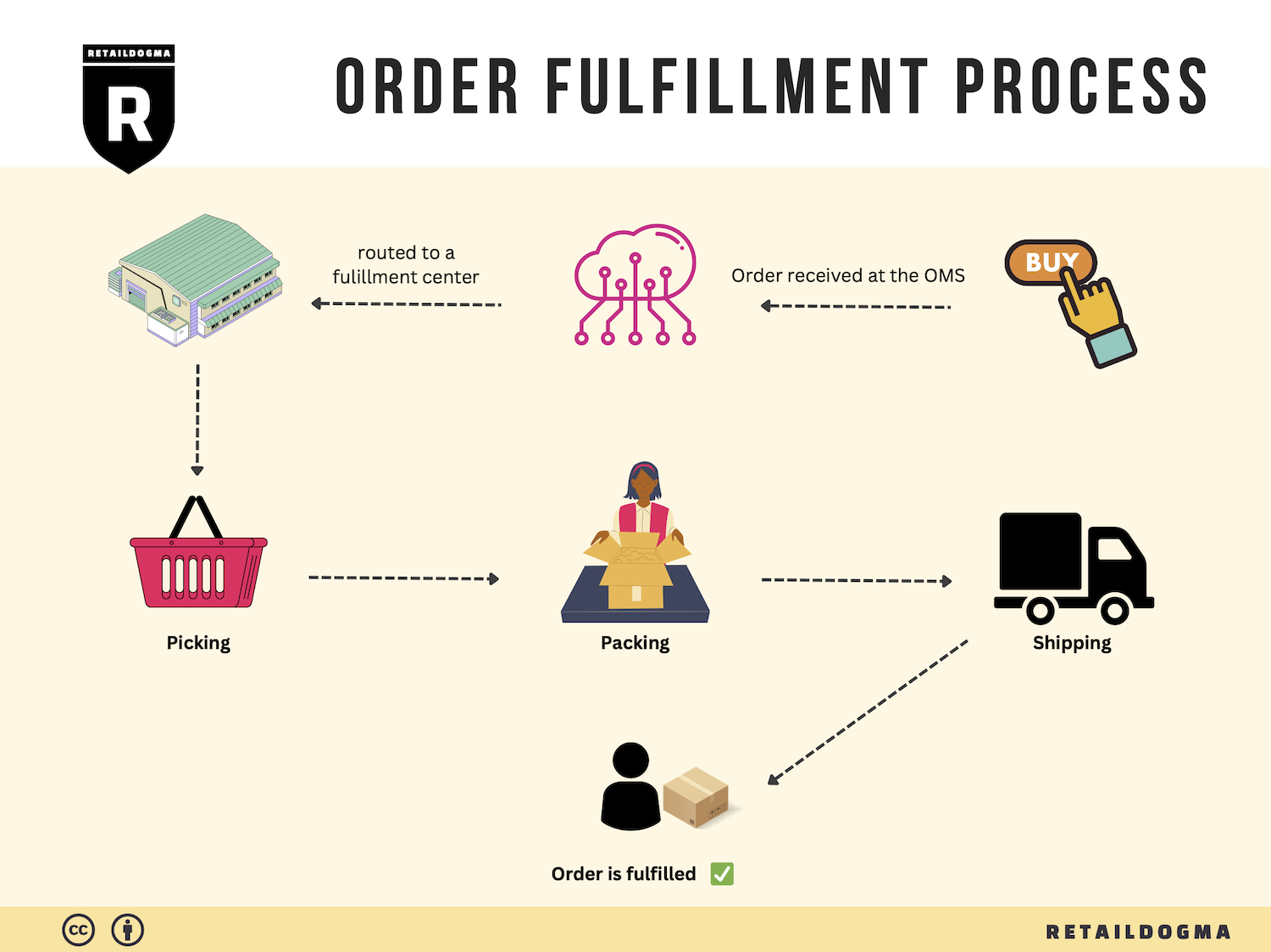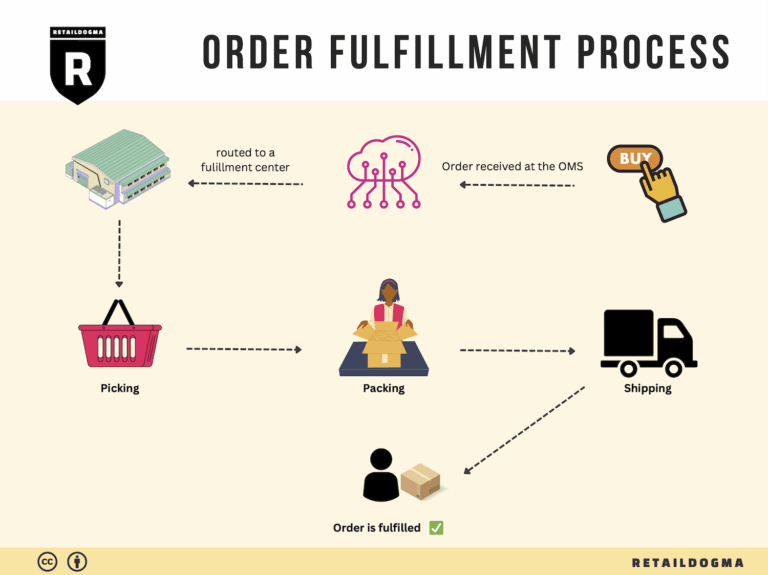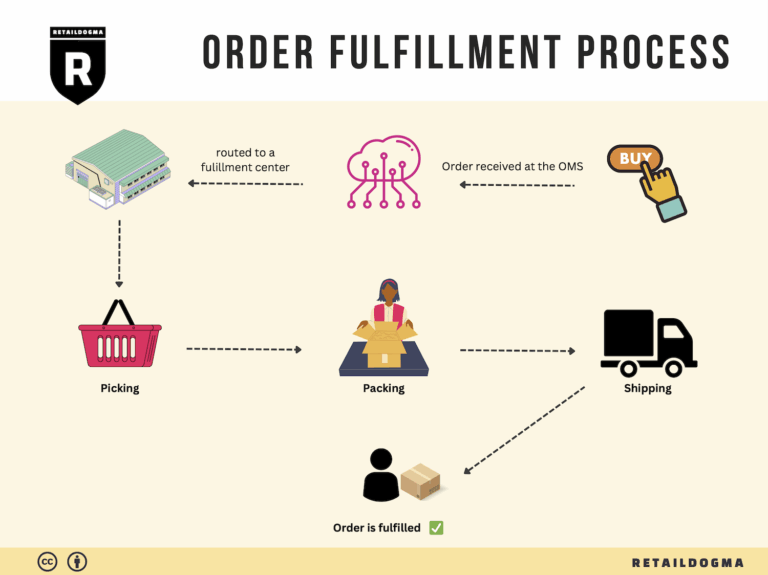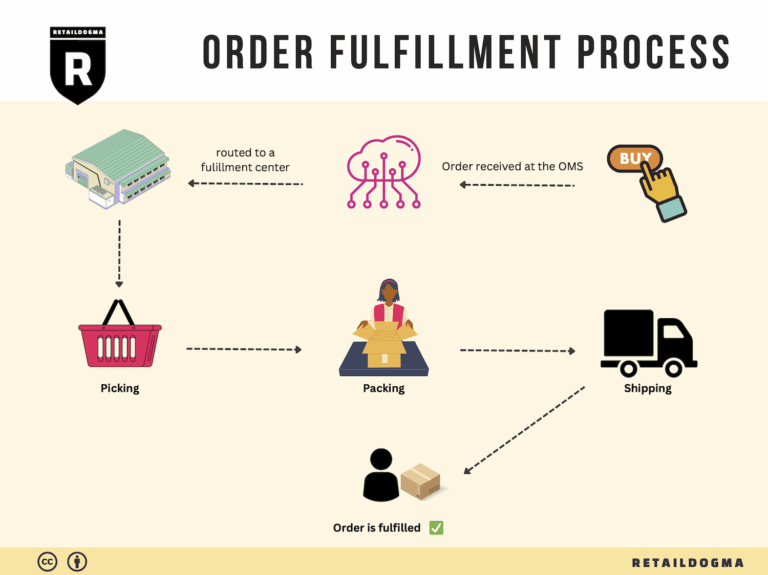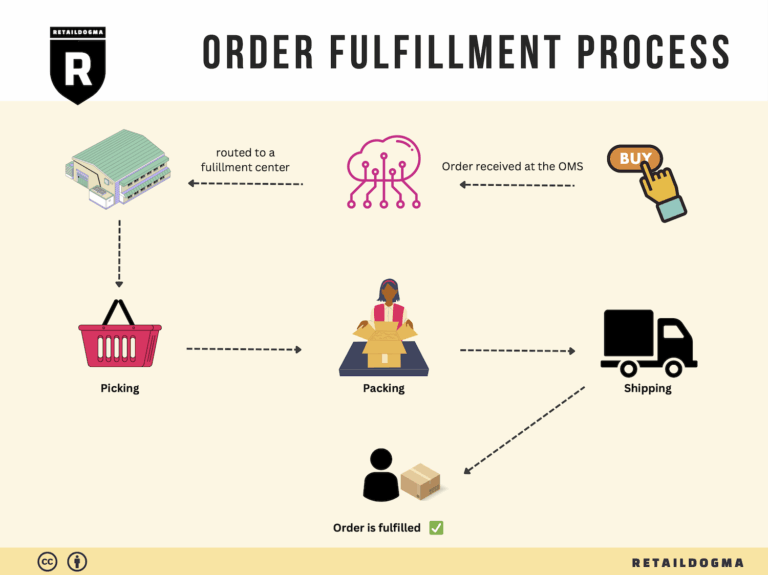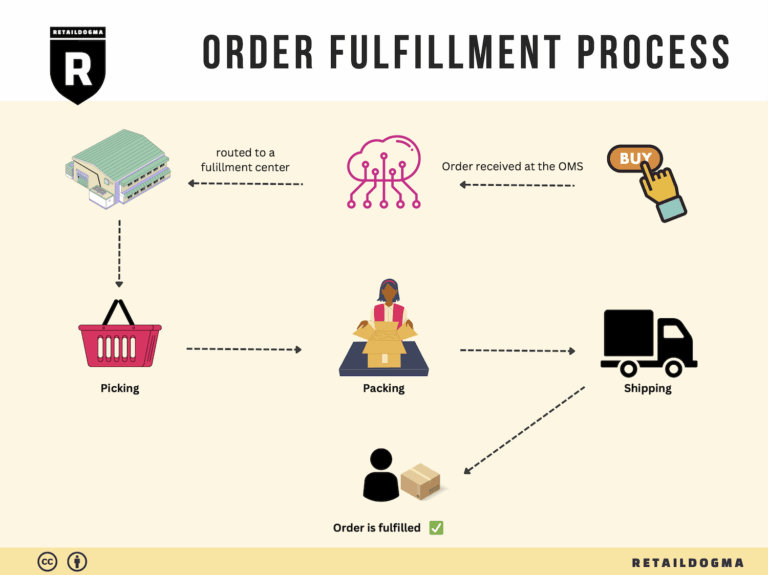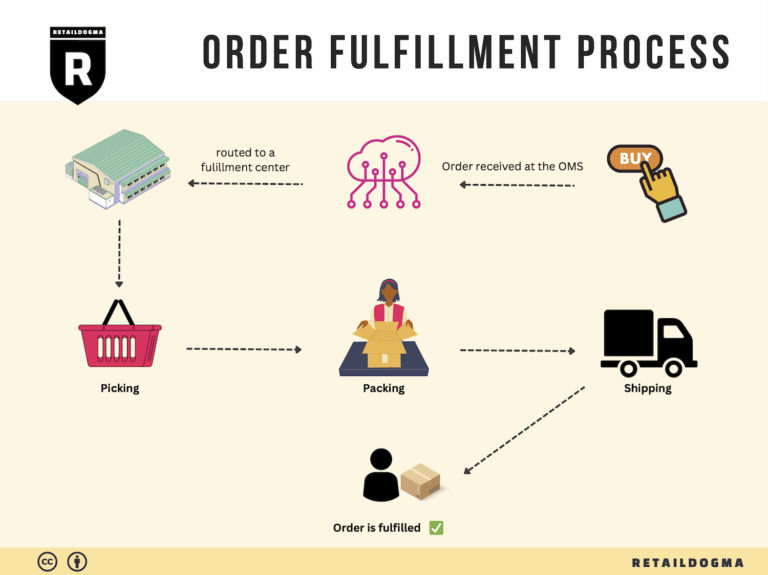Ecommerce Fulfillment Services: The Ultimate Guide (2025)
What is E-commerce Fulfillment? An Introduction for Growing Businesses
Understanding E-commerce Fulfillment
As your online business begins to gain traction, you may find yourself grappling with the complexities of packing and shipping orders. The excitement of growing sales can quickly turn into stress when faced with the logistical challenges of fulfilling customer demands. This is where e-commerce fulfillment becomes a crucial component of your operations. At its core, fulfillment refers to the entire process of getting a product from your inventory to your customer’s doorstep.
For growing businesses, navigating fulfillment can feel overwhelming. You might be wondering how to streamline this process without sacrificing quality or customer satisfaction. Fortunately, there are various fulfillment models designed to meet diverse needs and budgets. This guide will explore popular options, including Third-Party Logistics (3PL) and Fulfillment by Amazon (FBA), helping you understand which might be the best fit for your business.
We will delve into the core services associated with e-commerce fulfillment, such as inventory management, order processing, packing, and shipping. Understanding these services is essential for identifying what you need from a fulfillment partner.
Choosing the right fulfillment partner is another critical aspect we will cover. Factors such as shipping speed, technology integration, and customer service can significantly impact your business’s efficiency and reputation. We’ll provide practical tips on evaluating potential partners to ensure they align with your operational goals.
Pricing is an unavoidable consideration in fulfillment, and it can vary widely depending on the services you require and the partner you choose. This guide will break down common pricing structures, helping you to budget effectively and avoid unexpected costs.
Ultimately, this guide aims to empower you to make informed decisions about your logistics operations. By understanding the ins and outs of e-commerce fulfillment, you can scale your business more effectively, ensuring that your customers receive their orders quickly and reliably, while also maintaining your sanity behind the scenes. Let’s embark on this journey to simplify your fulfillment process and set your business up for success.
What You’ll Learn In This Guide
- What is E-commerce Fulfillment? An Introduction for Growing Businesses
- The Order Fulfillment Process: From ‘Buy’ Button to Customer’s Door
- Comparing Fulfillment Models: In-House vs. 3PL vs. Dropshipping
- A Deep Dive into Amazon FBA: Pros, Cons, and Who It’s For
- Core Services Offered by Fulfillment Centers
- How to Choose a Fulfillment Partner: A 6-Point Checklist
- Understanding Fulfillment Pricing: A Breakdown of Common Fees
- Frequently Asked Questions (FAQs) about Fulfillment
- Conclusion: Is Outsourcing Fulfillment the Right Move for Your Business?
- Important Disclaimer
The Order Fulfillment Process: From ‘Buy’ Button to Customer’s Door
1. Receiving Inventory
The order fulfillment process begins with receiving inventory, which is a critical step that ensures the warehouse is stocked with the correct products. When inventory arrives at the fulfillment center, it is first checked against purchase orders to verify that the correct quantities and items have been delivered. This process involves using Stock Keeping Units (SKUs), which are unique identifiers assigned to each product.
Why is this step important? Accurate receiving prevents stock discrepancies that can lead to issues down the line, such as overselling or customer dissatisfaction due to incorrect orders. Establishing a robust receiving process not only improves inventory accuracy but also sets the foundation for efficient order fulfillment. Implementing a barcode scanning system can enhance accuracy and speed, allowing for quick updates to inventory management systems.
2. Warehouse Storage
Once the inventory has been received and verified, it is moved to designated storage areas within the warehouse. This step involves organizing products in a systematic manner to facilitate easy access and retrieval. Effective warehouse storage strategies include slotting, where items are placed based on their demand, size, and weight. High-demand items are often stored closer to the packing area to minimize picking time.
The importance of this step lies in its impact on operational efficiency. A well-organized warehouse not only speeds up the picking process but also maximizes the use of space, reducing overhead costs. Implementing a warehouse management system (WMS) can help track the location of items in real-time, ensuring that products are easy to find and manage.
3. Order Picking
The next step in the fulfillment process is order picking, where items are retrieved from storage based on customer orders. This process typically utilizes pick lists, which are generated from the order management system. These lists indicate the items and quantities needed for each order, guiding fulfillment associates through the warehouse.
Order picking is crucial because it directly influences order accuracy and delivery speed. Mistakes during this phase can result in incorrect shipments, leading to returns and customer dissatisfaction. To enhance efficiency, businesses can adopt various picking methods, such as batch picking (where multiple orders are picked simultaneously) or zone picking (where different associates are responsible for different areas of the warehouse).
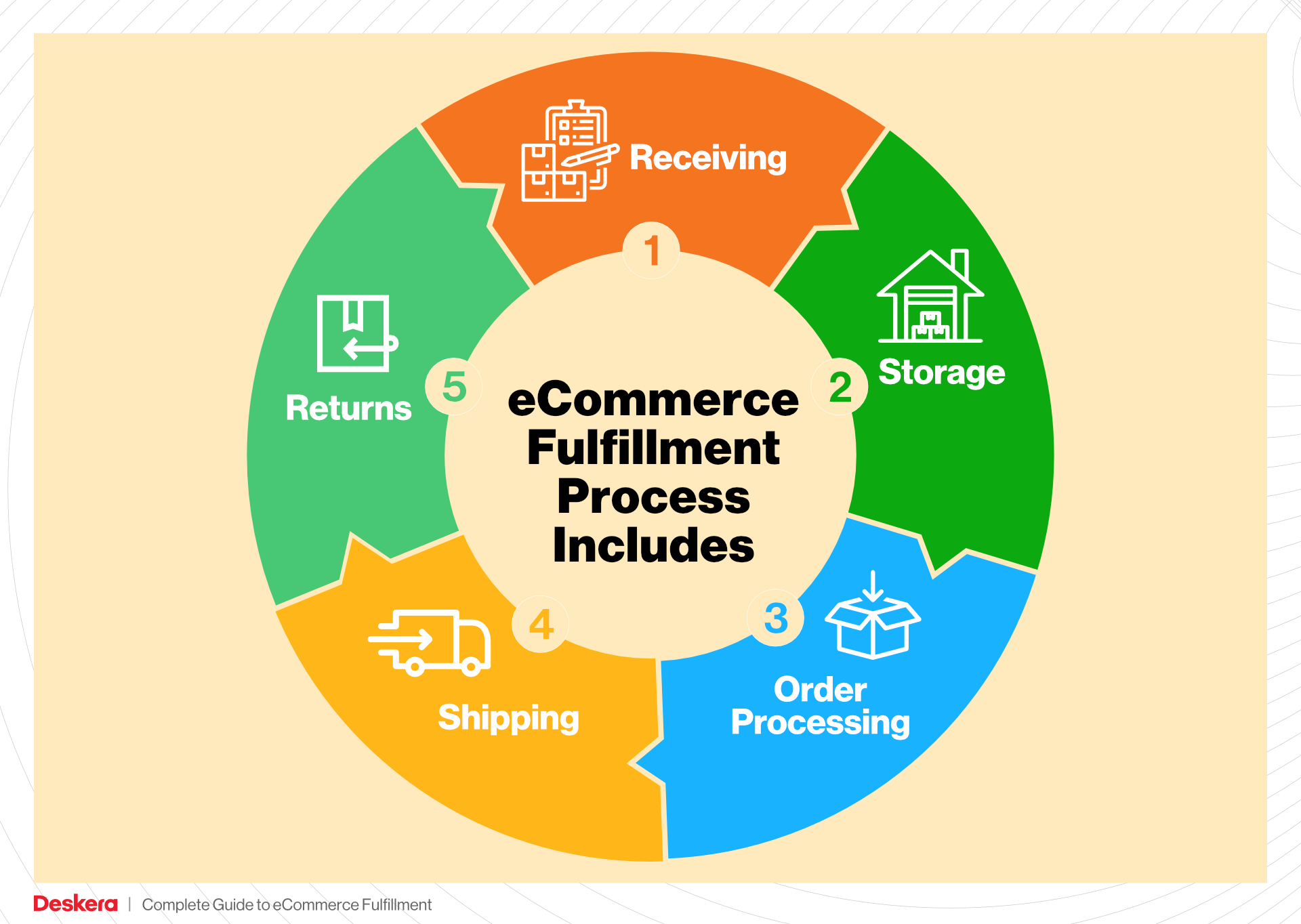
4. Order Packing
After the items are picked, they move to the packing station, where they are prepared for shipment. This step involves inspecting the items for quality, packing them securely in appropriate shipping materials, and labeling them for delivery. Utilizing packing slips—documents that accompany the shipment detailing the contents—ensures that customers receive exactly what they ordered.
Packing is a vital step because it protects products during transit and ensures that they arrive in good condition. A well-executed packing process can also enhance the unboxing experience, which is increasingly important in e-commerce. Businesses can further streamline this step by using automated packing systems that determine the optimal box size based on the order’s dimensions, reducing material waste and shipping costs.
5. Shipping & Delivery
The final step in the order fulfillment process is shipping and delivery. Once orders are packed, they are handed off to shipping carriers for delivery to customers. This phase involves managing shipping labels, tracking numbers, and coordinating with carriers to ensure timely delivery.
Shipping and delivery are critical as they directly affect customer satisfaction and brand reputation. Delays or mistakes at this stage can tarnish a business’s image and lead to lost sales. To optimize this step, businesses should consider using multiple carriers to compare rates and delivery times, ensuring they choose the best options for each order. Implementing a tracking system allows customers to monitor their shipments in real-time, enhancing transparency and trust in the fulfillment process.
By understanding and optimizing each of these steps, e-commerce businesses can significantly improve their order fulfillment processes, leading to enhanced customer satisfaction and operational efficiency.
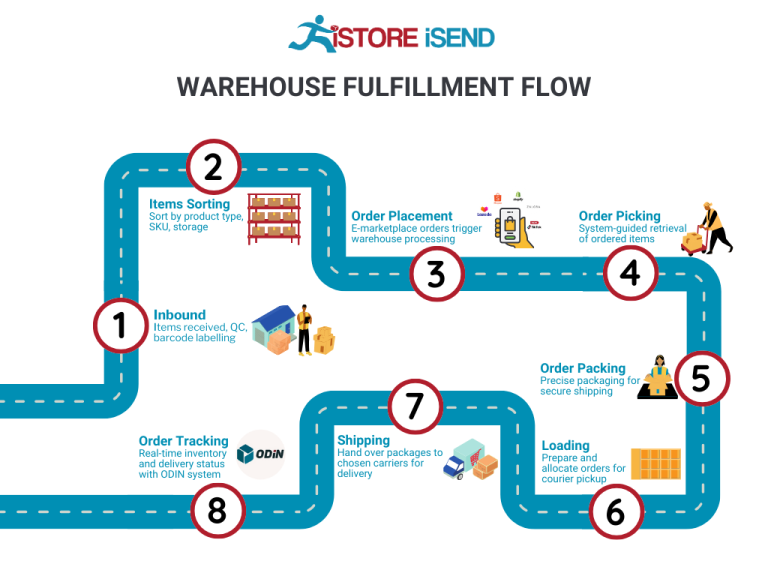
Comparing Fulfillment Models: In-House vs. 3PL vs. Dropshipping
Fulfillment Model Comparison
| Model | Who Handles Inventory | Best For (Business Stage) | Key Advantage | Key Disadvantage |
|---|---|---|---|---|
| In-House Fulfillment | Business (Owner/Staff) | Established Businesses | Full control over inventory and processes | High operational costs and resource demands |
| Third-Party Logistics (3PL) | Third-Party Provider | Growing Businesses | Scalability and reduced overhead costs | Less control over inventory and shipping |
| Dropshipping | Supplier | Startups/Small Businesses | Low startup costs and risk | Lower profit margins and potential supply chain issues |
In-House Fulfillment
In-house fulfillment is a model where the business handles all aspects of inventory management, order processing, and shipping operations. This approach is typically favored by established businesses with sufficient resources and a stable customer base. The primary advantage of in-house fulfillment is the complete control it provides over inventory management, quality assurance, and customer service. Businesses can tailor their processes to align with their brand’s standards, ensuring a consistent customer experience. However, this model comes with significant operational costs, including warehousing, staffing, and equipment. As businesses scale, they may find it increasingly challenging to manage logistics efficiently, which can divert focus from core activities such as marketing and product development.
Third-Party Logistics (3PL)
Third-party logistics (3PL) involves outsourcing logistics operations to an external provider. This model is particularly beneficial for growing businesses that need to scale quickly without the burden of managing their own fulfillment processes. A 3PL provider typically handles warehousing, inventory management, and shipping, allowing businesses to focus on their core competencies. The key advantage of using a 3PL is the ability to leverage the provider’s expertise, technology, and infrastructure, resulting in improved efficiency and cost savings. However, businesses may face challenges related to less control over inventory and shipping times, which can impact customer satisfaction. When selecting a 3PL partner, it is crucial for businesses to ensure compatibility with their operational goals and customer service standards.
Dropshipping
Dropshipping is a fulfillment model where the retailer does not hold inventory but instead relies on suppliers to fulfill orders directly to customers. This approach is particularly attractive for startups and small businesses looking to minimize upfront costs and financial risk. The main advantage of dropshipping is the low barrier to entry; entrepreneurs can launch an e-commerce store with minimal investment in inventory. Additionally, businesses can offer a wider range of products without the complexities of inventory management. However, dropshipping typically results in lower profit margins due to reliance on suppliers and potential issues with product quality and shipping times. Furthermore, since retailers have little control over the fulfillment process, maintaining customer satisfaction can become challenging, especially if suppliers experience delays or stock shortages.
Conclusion
Choosing the right fulfillment model is crucial for e-commerce business owners and operations managers aiming to scale effectively. Each model has its unique advantages and disadvantages, and the best choice often depends on the specific needs and goals of the business. In-house fulfillment offers control and customization but at a higher operational cost, making it ideal for established companies. 3PL provides scalability and expertise, appealing to growing businesses, while dropshipping offers a low-risk entry point for startups. Ultimately, understanding the nuances of each model will empower entrepreneurs to make informed decisions that align with their growth strategies and customer expectations.
A Deep Dive into Amazon FBA: Pros, Cons, and Who It’s For
Understanding Fulfillment by Amazon (FBA)
Fulfillment by Amazon (FBA) is a service provided by Amazon that allows e-commerce businesses to utilize Amazon’s extensive logistics network to store, pack, and ship their products. Sellers send their inventory to Amazon’s fulfillment centers, where Amazon takes care of storage, order fulfillment, shipping, and customer service. This enables businesses to focus on growth and marketing while leveraging Amazon’s robust infrastructure.
How FBA Works
-
Inventory Setup: Sellers create an FBA account and list their products on Amazon. They must prepare their products according to Amazon’s guidelines, which include labeling and packaging requirements.
-
Shipping to Fulfillment Centers: After setting up their listings, sellers ship their products to Amazon’s fulfillment centers. Amazon provides shipping labels and instructions to ensure that products are sent to the correct locations.
-
Storage and Management: Once the inventory arrives at the fulfillment center, Amazon stores it in their warehouses. Sellers can monitor their inventory levels through their Amazon Seller Central account.
-
Order Fulfillment: When a customer places an order for a product listed with FBA, Amazon takes over the fulfillment process. This includes picking the product from the shelf, packing it, and shipping it directly to the customer.
-
Customer Service: Amazon handles customer inquiries and returns for FBA orders, providing a level of service that can enhance customer satisfaction and trust.
-
Payment: After the sale, Amazon transfers the revenue (minus fees) to the seller’s account, usually on a bi-weekly basis.
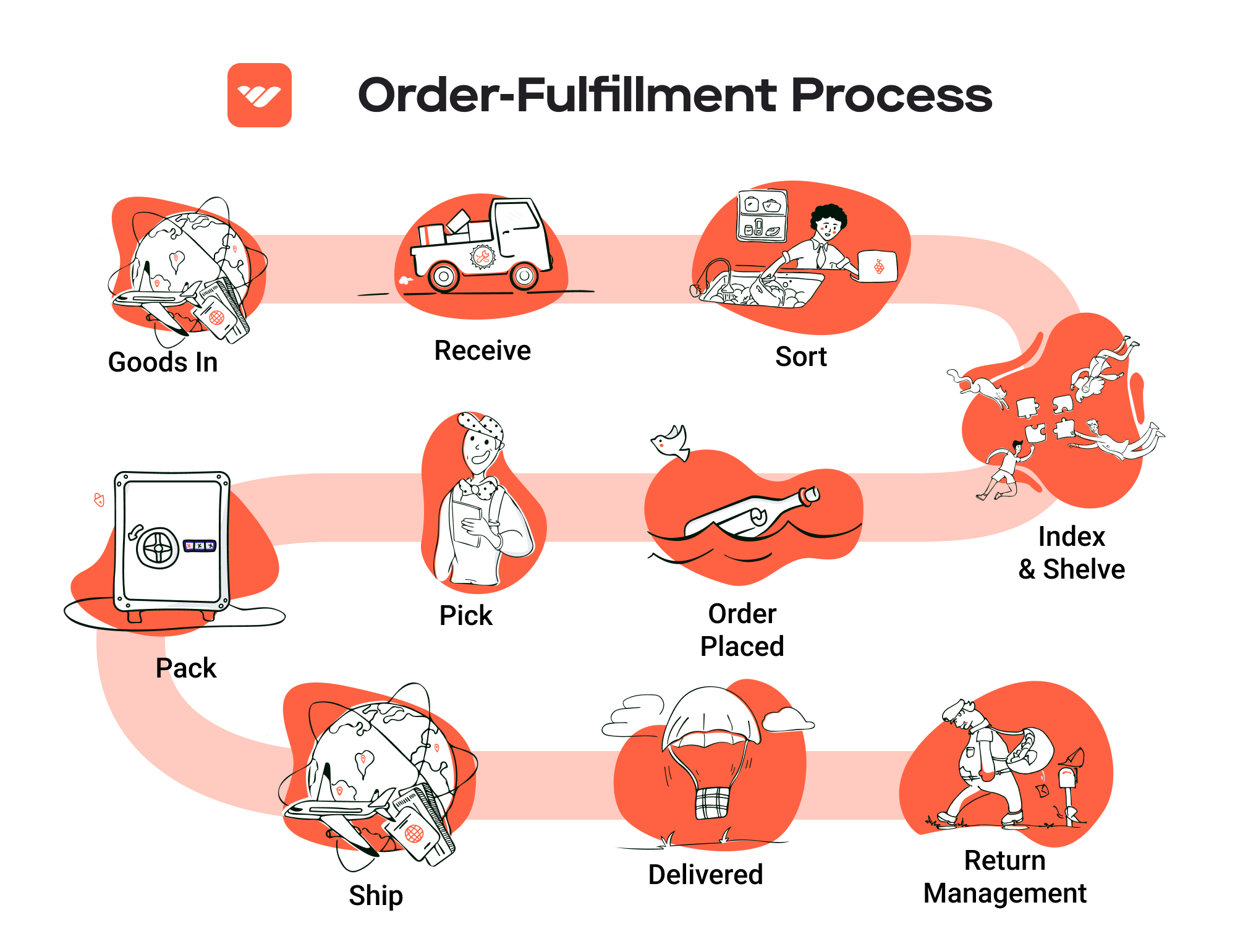
Pros of Using FBA
1. Prime Eligibility
Products fulfilled by Amazon are automatically eligible for Amazon Prime, which can significantly increase visibility and sales. Prime members are often willing to pay more for products that offer free and fast shipping.
2. Customer Trust
By using FBA, sellers can benefit from Amazon’s reputation for reliable shipping and customer service. Customers are more likely to purchase products that are fulfilled by Amazon due to the trust associated with the Amazon brand.
3. Multi-Channel Fulfillment
FBA can be used for sales beyond Amazon. Sellers can fulfill orders from their own websites or other marketplaces using the same inventory stored in Amazon’s fulfillment centers. This flexibility allows for streamlined operations across different sales channels.
4. Scalability
FBA allows sellers to scale their businesses without the need for additional warehousing or logistics infrastructure. As sales grow, sellers can simply send more inventory to Amazon.
5. Time Savings
Outsourcing fulfillment to Amazon saves sellers time on packing, shipping, and customer service. This allows business owners to focus on other important areas like marketing and product development.
Cons of Using FBA
1. High Fees
While FBA can simplify logistics, it comes with various fees that can cut into profits. These fees include storage fees, fulfillment fees, and long-term storage fees for unsold inventory. Sellers need to carefully calculate these costs to ensure that FBA is financially viable.
2. Strict Inventory Rules
Amazon has stringent inventory management policies. Sellers must adhere to guidelines regarding product preparation, labeling, and packaging. Failure to comply can result in additional charges or penalties.
3. Commingling Risks
When using FBA, sellers’ inventory may be commingled with that of other sellers. This can lead to issues if a customer receives a damaged or defective product that is not from their inventory. In such cases, sellers may face challenges in tracking and managing returns.
4. Limited Control Over Shipping
While Amazon handles shipping, sellers have limited control over the shipping process. This includes the choice of carriers and shipping times. Sellers must rely on Amazon’s systems, which may not always align with their own customer service standards.
5. Dependency on Amazon
Using FBA can create a dependency on Amazon’s platform for sales and fulfillment. This reliance can pose risks if Amazon changes its policies or fees, potentially impacting a seller’s business model.
Who is FBA Best For?
Fulfillment by Amazon is ideal for various types of sellers, particularly:
-
Small to Medium-Sized Businesses: Companies that do not have the resources to manage their own logistics can benefit from FBA’s infrastructure and customer service.
-
E-commerce Entrepreneurs: New sellers looking to enter the market quickly can leverage FBA to gain visibility and trust without needing to build their own fulfillment operations.
-
Brands with High Turnover Products: Sellers with products that have a fast turnover rate can maximize their profits by utilizing Amazon’s efficient fulfillment process.
-
Multi-Channel Sellers: Businesses that sell on multiple platforms can benefit from FBA’s multi-channel fulfillment capabilities, allowing them to streamline operations.
-
Sellers with Seasonal Products: FBA is beneficial for sellers with seasonal inventory, as it allows them to scale storage and fulfillment needs up or down based on demand.
In conclusion, while Fulfillment by Amazon offers significant advantages for e-commerce sellers, it is essential to weigh these against the potential downsides. By understanding both the pros and cons, businesses can make informed decisions about whether FBA aligns with their operational goals and growth strategies.
Core Services Offered by Fulfillment Centers
Inventory Management & Warehousing
Inventory management and warehousing are foundational services provided by fulfillment centers, crucial for the seamless operation of e-commerce businesses. This service encompasses the storage, tracking, and management of inventory levels, ensuring that products are available when needed without overstocking.
What It Is: Fulfillment centers maintain large warehouses where products are stored until they are sold. Advanced inventory management systems are employed to track stock levels in real-time, monitor product conditions, and manage reordering processes. These systems provide insights into inventory turnover rates and sales trends, allowing businesses to make informed decisions about their stock.
Benefits: Efficient inventory management reduces the risk of stockouts and overstock situations, both of which can negatively impact customer satisfaction and cash flow. By outsourcing this function, e-commerce businesses can free up valuable resources, allowing them to focus on sales and marketing strategies. Additionally, fulfillment centers often have access to economies of scale, which can lower storage costs and improve operational efficiency.
Pick and Pack Services
Pick and pack services are a critical component of the order fulfillment process, ensuring that products are accurately selected and packaged for shipment to customers.
What It Is: This service involves the picking of ordered items from the warehouse shelves and packing them appropriately for shipment. Fulfillment centers utilize technology such as barcode scanning and automated systems to streamline this process, ensuring accuracy and speed. Workers are trained to handle various types of products and packaging materials to meet specific shipping requirements.
Benefits: The primary advantage of pick and pack services is improved order accuracy and efficiency. Fast and accurate order fulfillment enhances customer satisfaction, leading to repeat business and positive reviews. Moreover, by utilizing fulfillment centers for these services, e-commerce businesses can scale operations without the need for additional labor or training, thus maintaining flexibility in their logistics.
Kitting and Assembly
Kitting and assembly services involve the grouping of multiple products into a single package or kit, which can be particularly beneficial for businesses that offer bundled products or promotional items.
What It Is: This service includes the assembly of products into kits, packaging them for retail or shipment. For instance, a company might sell a set of skincare products that need to be bundled together before shipping. Fulfillment centers can handle the entire kitting process, from sourcing the individual products to assembling and packaging them.
Benefits: Kitting and assembly can significantly enhance the customer experience by providing convenience and value. Customers appreciate receiving bundled products that save them time and effort. For businesses, this service can lead to increased sales through cross-selling and upselling opportunities, as well as reduced shipping costs by consolidating items into a single shipment. Furthermore, it allows companies to respond quickly to market trends and customer demands without investing in extensive in-house capabilities.
Returns Management (Reverse Logistics)
Returns management is an often-overlooked yet essential service provided by fulfillment centers, especially in the e-commerce sector where return rates can be high.
What It Is: This service encompasses the handling of returned products, including the processing, inspection, and restocking of items. Fulfillment centers are equipped to manage the complexities of reverse logistics, including determining whether products can be resold, repaired, or need to be disposed of.
Benefits: Efficient returns management is vital for maintaining customer loyalty and satisfaction. A streamlined process ensures that customers have a hassle-free experience when returning items, which can lead to repeat purchases. Moreover, effective handling of returns can minimize losses associated with unsold inventory. By outsourcing this function, e-commerce businesses can leverage the fulfillment center’s expertise and technology to enhance their reverse logistics processes, ultimately improving their bottom line.
In conclusion, partnering with a fulfillment center provides e-commerce businesses with essential services that streamline operations, reduce costs, and enhance customer satisfaction. By utilizing these core services, businesses can focus on growth and scaling their sales while leaving the complexities of logistics in the hands of experts.
How to Choose a Fulfillment Partner: A 6-Point Checklist
Location & Warehouse Network
Why It’s Important:
The geographical location of your fulfillment partner’s warehouses can significantly impact shipping costs and delivery times. A partner with strategically placed warehouses can help you reach your customers faster and at a lower cost, enhancing your overall customer experience.
Questions to Ask:
– What is the location of your warehouses, and how do they align with our target market?
– How many warehouses do you operate, and what is the average distance to major urban centers?
– Do you have plans to expand your warehouse network in the future?
Technology & Integrations
Why It’s Important:
The technology used by your fulfillment partner can streamline operations and enhance efficiency. A robust technology platform should easily integrate with your existing e-commerce systems, allowing for real-time inventory tracking, order processing, and data analytics.
Questions to Ask:
– What fulfillment management software do you use, and how does it integrate with our e-commerce platform?
– Can we access real-time tracking and reporting on orders and inventory?
– How do you handle system outages or technology failures?
Specializations (e.g., cold storage, oversized items)
Why It’s Important:
Different businesses have unique needs, and some products may require special handling, such as temperature control or oversized storage solutions. Choosing a partner with the right specializations can prevent product damage and ensure compliance with regulations.
Questions to Ask:
– Do you have facilities for specialized storage (e.g., cold storage, hazardous materials)?
– What experience do you have handling our specific product types?
– Can you accommodate unusual shipping requirements, such as oversized or fragile items?
Scalability & Capacity
Why It’s Important:
As your business grows, your fulfillment needs may change. A good partner should be able to scale operations to match your growth without compromising service quality. This includes handling seasonal spikes in order volume efficiently.
Questions to Ask:
– What is your current capacity, and how do you handle peak seasons or sudden increases in demand?
– Can you provide examples of how you’ve supported other clients during their growth phases?
– What measures do you have in place to ensure continued service quality during high-demand periods?
Pricing and Contracts
Why It’s Important:
Understanding the pricing structure and contract terms is crucial for maintaining profitability. A transparent pricing model helps avoid unexpected fees and allows for better financial forecasting.
Questions to Ask:
– Can you provide a detailed breakdown of your pricing structure (e.g., storage fees, shipping costs, handling fees)?
– Are there any additional costs we should be aware of, such as for returns or custom packaging?
– What are the terms for contract termination or renewal, and are there any penalties for early termination?
Customer Support & Reviews
Why It’s Important:
The level of customer support provided by your fulfillment partner can greatly affect your operational efficiency. You want a partner who is responsive and supportive, particularly in resolving issues that may arise during the fulfillment process.
Questions to Ask:
– What customer support options do you offer (e.g., phone, email, chat), and what are your response times?
– Can you provide references or case studies from current clients who have similar needs to ours?
– How do you handle customer complaints or fulfillment errors, and what is your process for resolution?
Conclusion
Choosing the right fulfillment partner is a critical decision that can influence your business’s success. By systematically evaluating potential partners using this checklist, you can ensure that you select a partner who not only meets your current needs but also supports your growth and operational goals in the future. Each of these points addresses essential aspects of fulfillment that can make or break your customer experience and your bottom line.
Understanding Fulfillment Pricing: A Breakdown of Common Fees
Initial Setup Fees
Initial setup fees are often charged by fulfillment centers when you first begin using their services. These fees can vary widely based on the provider and the complexity of your fulfillment needs. Typically, they cover the costs associated with onboarding your products into their system, which may include:
- Account Setup: Creating your account and configuring your specific requirements.
- Software Integration: Integrating your e-commerce platform with the fulfillment provider’s system for order processing and inventory management.
- Training Costs: Any training required for your team to effectively use the fulfillment system.
The initial setup fee may be a one-time charge or could be structured as a monthly fee during the initial period of service. Understanding these costs upfront can help you budget effectively as you transition to using a new fulfillment partner.
Receiving Fees
Receiving fees are charged when your inventory arrives at the fulfillment center. These fees cover the labor and resources required to unload, inspect, and log your products into the warehouse management system. The following factors typically influence receiving fees:
- Volume of Inventory: Fees are often calculated based on the total volume or weight of the products being received. Larger shipments may incur higher fees.
- Complexity of Products: If your items require special handling (e.g., fragile items or those needing refrigeration), the receiving fee may increase due to the additional labor and care involved.
Typically, receiving fees are calculated on a per-unit basis or as a flat fee for a shipment, depending on the fulfillment center’s pricing structure.
Storage Fees (per pallet/bin)
Storage fees are charged for the space your inventory occupies within the fulfillment center. This fee is typically calculated on a per-pallet or per-bin basis and may vary depending on the following:
- Duration of Storage: Many providers charge monthly storage fees, which can increase if your inventory remains in the warehouse for an extended period.
- Type of Storage: Specialized storage (e.g., climate-controlled or hazardous materials) often incurs higher fees than standard storage.
To minimize storage fees, consider implementing a just-in-time inventory strategy, which ensures that you only store enough products to meet immediate demand, reducing the time your inventory spends in the warehouse.
Pick & Pack Fees (per item/order)
Pick and pack fees are charged for the labor involved in picking items from the warehouse and packing them for shipment. This fee can vary based on:
- Number of Items: Typically, the more items in an order, the higher the pick fee. Some fulfillment centers charge a flat fee per order, while others may charge per item picked.
- Packing Complexity: If special packaging is required (e.g., gift wrapping or custom boxes), additional fees may apply.
Understanding how pick and pack fees are structured can help you optimize your order fulfillment process. For instance, consolidating orders or reducing the number of items per order can lead to cost savings.
Shipping Fees
Shipping fees are among the most significant costs in the fulfillment process and can vary greatly depending on several factors:
- Shipping Method: The choice between standard, expedited, or same-day shipping will influence the cost. Different carriers may offer varying rates for similar services.
- Destination: Shipping costs generally increase with distance. International shipping will also incur customs fees and duties, which can add to the total shipping cost.
- Weight and Dimensions: Shipping fees are often based on the weight and dimensions of the package. Oversized or heavy items may attract higher fees.
To effectively manage shipping costs, consider negotiating rates with carriers, using flat-rate shipping options when applicable, and leveraging software to compare shipping rates across multiple carriers.
Tips for Getting an Accurate Quote
-
Provide Detailed Information: When requesting a quote, be as detailed as possible about your inventory, expected order volume, and any special requirements. This will help fulfillment providers give you a more accurate estimate.
-
Understand Pricing Structures: Familiarize yourself with how different fulfillment centers structure their fees. This includes knowing whether they charge flat fees or variable rates based on order size, weight, or complexity.
-
Compare Multiple Providers: Don’t settle for the first quote you receive. Comparing quotes from multiple fulfillment centers can give you a clearer picture of the market and help you negotiate better terms.
-
Ask About Hidden Fees: Always inquire about any potential hidden fees that may not be immediately apparent in the initial quote. This can include fees for returns, additional storage, or specific handling requirements.
-
Evaluate Long-Term Costs: Consider the long-term implications of the pricing structure, including how costs may change as your business scales. A provider with low initial fees but high storage or shipping fees could become more expensive as you grow.
By understanding these common fulfillment pricing models, e-commerce business owners can make informed decisions that help optimize their logistics operations and enhance their overall profitability.
Frequently Asked Questions (FAQs) about Fulfillment
1. What does an Amazon Fulfillment Associate do?
An Amazon Fulfillment Associate plays a crucial role in the logistics process by picking, packing, and shipping products to ensure timely delivery to customers. They are responsible for accurately reading customer orders, counting products, sorting materials, and using technology to track inventory and manage shipments.
2. What are the benefits of working as a Fulfillment Associate at Amazon?
Working as a Fulfillment Associate at Amazon offers numerous benefits, including competitive pay, comprehensive healthcare from day one, and opportunities for career advancement through skills training and tuition support. Associates also enjoy flexible scheduling and a supportive work environment.
3. How does working in a fulfillment center differ from a traditional warehouse?
While both fulfillment centers and traditional warehouses store products, fulfillment centers are specifically designed for the rapid processing and shipping of customer orders. Fulfillment centers focus on e-commerce operations, often utilizing advanced technology and automation to streamline order fulfillment, whereas traditional warehouses may prioritize bulk storage and distribution.
4. What is a 3PL (Third-Party Logistics) provider?
A 3PL provider is a third-party company that manages logistics and supply chain functions for other businesses. This can include warehousing, order fulfillment, transportation, and distribution services. Utilizing a 3PL can help e-commerce businesses scale operations without the need to invest in their own infrastructure.
5. How much do fulfillment services typically cost?
The cost of fulfillment services can vary widely based on factors such as the volume of orders, the complexity of the product, and the specific services required. Generally, businesses can expect to pay for storage, order processing, packaging, and shipping fees. It’s essential to evaluate several providers to find a solution that fits your budget and operational needs.
6. What skills are required to be a successful Fulfillment Associate?
Successful Fulfillment Associates should possess strong attention to detail, good organizational skills, and the ability to work efficiently in a fast-paced environment. Familiarity with technology, such as inventory management systems and barcode scanners, is also beneficial. Physical stamina is important, as the job often requires standing for long periods and lifting packages.
7. Are there opportunities for advancement within Amazon’s fulfillment network?
Yes, Amazon offers numerous opportunities for career advancement within its fulfillment network. Associates can move into leadership roles such as Process Assistants or even transition to other departments within the company. Amazon also provides access to training programs and tuition assistance to support continued education and professional development.
8. What safety measures are in place for Fulfillment Associates?
Amazon prioritizes the safety and well-being of its Fulfillment Associates by implementing comprehensive safety protocols, including regular training, ergonomic equipment, and safety gear. Facilities are equipped with safety signage, and there are procedures in place to report and address any safety concerns promptly.
9. How does Amazon ensure timely delivery of packages?
Amazon employs a sophisticated logistics network that includes fulfillment centers strategically located near major urban areas. This enables faster processing and shipping of orders. Additionally, advanced technology and data analytics are used to optimize inventory management and streamline delivery routes, ensuring packages reach customers promptly.
10. What should I expect during the hiring process for a Fulfillment Associate position at Amazon?
The hiring process for a Fulfillment Associate typically includes an online application, a brief phone interview, and an in-person assessment, which may involve a tour of the facility. Candidates should be prepared for questions about their work experience, skills, and ability to work in a physically demanding environment.
Conclusion: Is Outsourcing Fulfillment the Right Move for Your Business?
The Case for Outsourcing Fulfillment
Outsourcing your fulfillment can be a game-changer for your e-commerce business. By leveraging a third-party fulfillment service, you can save invaluable time and focus on core activities such as marketing, product development, and customer engagement. Instead of being bogged down by the logistics of packing and shipping, you can allocate your resources toward strategies that drive growth and enhance customer satisfaction.
Scalability is another critical advantage. As your business grows, so does the complexity of your logistics operations. Fulfillment partners are equipped to handle fluctuations in demand, whether it’s during peak seasons or as your product line expands. This flexibility allows you to scale your operations without the need for significant upfront investments in infrastructure or personnel.
Moreover, partnering with experienced fulfillment services provides you with access to industry expertise and advanced technology. These partners often employ sophisticated systems that streamline order processing and inventory management, ensuring faster delivery times and reduced errors. Their knowledge can also help you optimize your supply chain, offering insights that might not be available in-house.
However, the success of outsourcing fulfillment largely hinges on selecting the right partner. It’s crucial to assess potential partners based on their track record, service offerings, and alignment with your business goals. A well-chosen partner can significantly enhance your operational efficiency and customer experience.
Call to Action
As you consider the potential of outsourcing fulfillment, take a moment to audit your current shipping process. Evaluate your operational challenges, customer feedback, and growth projections. This assessment will help you determine if a fulfillment partner is the right next step to propel your business forward. By making informed decisions today, you can lay a strong foundation for sustainable growth and success in the competitive e-commerce landscape.
Important Disclaimer
⚠️ Important Disclaimer
The information in this guide is for educational purposes. Fulfillment services, pricing, and platform features change frequently. Always conduct your own due diligence and consult with providers directly before making business decisions.
